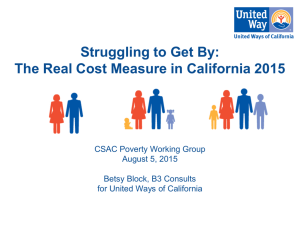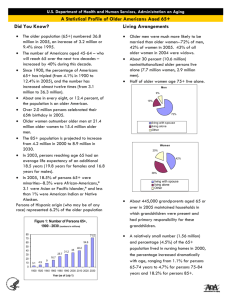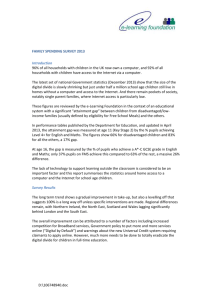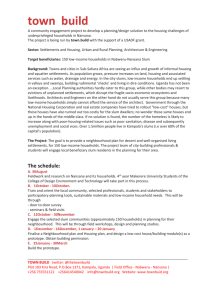View Extended Abstract
advertisement
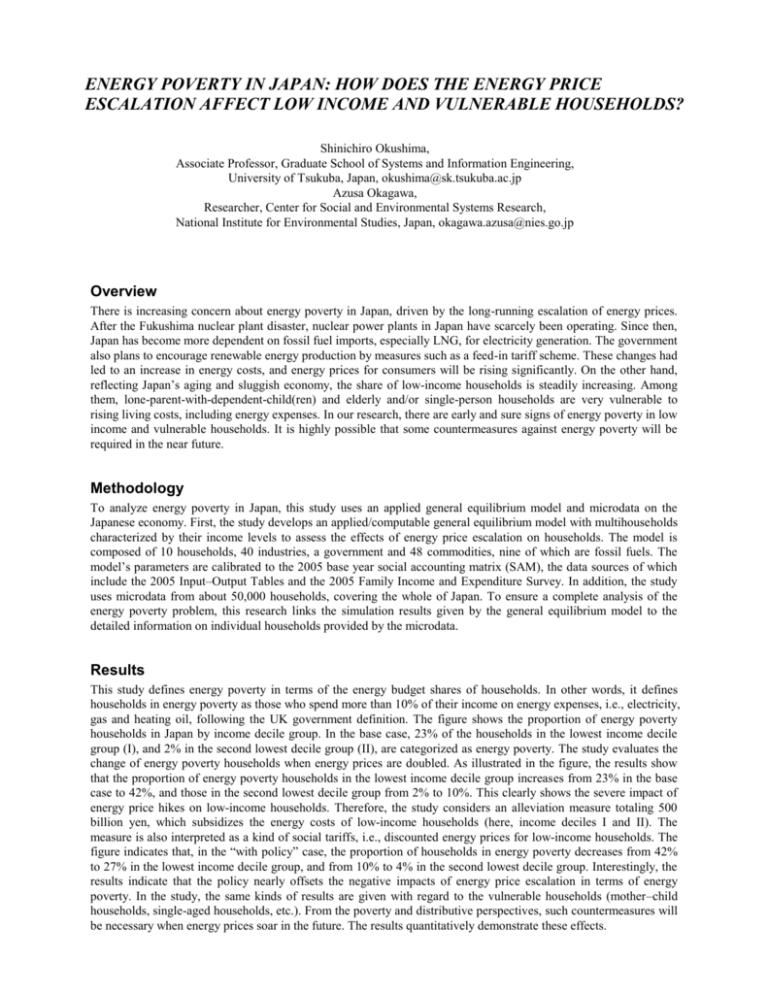
ENERGY POVERTY IN JAPAN: HOW DOES THE ENERGY PRICE ESCALATION AFFECT LOW INCOME AND VULNERABLE HOUSEHOLDS? Shinichiro Okushima, Associate Professor, Graduate School of Systems and Information Engineering, University of Tsukuba, Japan, okushima@sk.tsukuba.ac.jp Azusa Okagawa, Researcher, Center for Social and Environmental Systems Research, National Institute for Environmental Studies, Japan, okagawa.azusa@nies.go.jp Overview There is increasing concern about energy poverty in Japan, driven by the long-running escalation of energy prices. After the Fukushima nuclear plant disaster, nuclear power plants in Japan have scarcely been operating. Since then, Japan has become more dependent on fossil fuel imports, especially LNG, for electricity generation. The government also plans to encourage renewable energy production by measures such as a feed-in tariff scheme. These changes had led to an increase in energy costs, and energy prices for consumers will be rising significantly. On the other hand, reflecting Japan’s aging and sluggish economy, the share of low-income households is steadily increasing. Among them, lone-parent-with-dependent-child(ren) and elderly and/or single-person households are very vulnerable to rising living costs, including energy expenses. In our research, there are early and sure signs of energy poverty in low income and vulnerable households. It is highly possible that some countermeasures against energy poverty will be required in the near future. Methodology To analyze energy poverty in Japan, this study uses an applied general equilibrium model and microdata on the Japanese economy. First, the study develops an applied/computable general equilibrium model with multihouseholds characterized by their income levels to assess the effects of energy price escalation on households. The model is composed of 10 households, 40 industries, a government and 48 commodities, nine of which are fossil fuels. The model’s parameters are calibrated to the 2005 base year social accounting matrix (SAM), the data sources of which include the 2005 Input–Output Tables and the 2005 Family Income and Expenditure Survey. In addition, the study uses microdata from about 50,000 households, covering the whole of Japan. To ensure a complete analysis of the energy poverty problem, this research links the simulation results given by the general equilibrium model to the detailed information on individual households provided by the microdata. Results This study defines energy poverty in terms of the energy budget shares of households. In other words, it defines households in energy poverty as those who spend more than 10% of their income on energy expenses, i.e., electricity, gas and heating oil, following the UK government definition. The figure shows the proportion of energy poverty households in Japan by income decile group. In the base case, 23% of the households in the lowest income decile group (I), and 2% in the second lowest decile group (II), are categorized as energy poverty. The study evaluates the change of energy poverty households when energy prices are doubled. As illustrated in the figure, the results show that the proportion of energy poverty households in the lowest income decile group increases from 23% in the base case to 42%, and those in the second lowest decile group from 2% to 10%. This clearly shows the severe impact of energy price hikes on low-income households. Therefore, the study considers an alleviation measure totaling 500 billion yen, which subsidizes the energy costs of low-income households (here, income deciles I and II). The measure is also interpreted as a kind of social tariffs, i.e., discounted energy prices for low-income households. The figure indicates that, in the “with policy” case, the proportion of households in energy poverty decreases from 42% to 27% in the lowest income decile group, and from 10% to 4% in the second lowest decile group. Interestingly, the results indicate that the policy nearly offsets the negative impacts of energy price escalation in terms of energy poverty. In the study, the same kinds of results are given with regard to the vulnerable households (mother–child households, single-aged households, etc.). From the poverty and distributive perspectives, such countermeasures will be necessary when energy prices soar in the future. The results quantitatively demonstrate these effects. Proportion of energy poverty households by income decile group Conclusions This study evaluates the impact of energy price escalation on Japanese households from the viewpoint of energy poverty. It uses both a general equilibrium model and anonymized microdata to perform comprehensive analysis focusing on low income and vulnerable households. The study concludes that energy price escalation adversely affects low income and vulnerable households to a significant degree and that some alleviation measures should be implemented when energy prices go up in the future. We hope that the findings of this study will have some important implications for future practice in tackling energy poverty in Japan, as well as in other developed countries.



